
Street art is a powerful form of expression that has captivated audiences around the world. From vibrant murals to intricate graffiti tags, these artworks bring life and creativity to urban environments. For those who are fascinated by this dynamic and ever-evolving art form, a comprehensive look into the world of graffiti and murals is a must.
The Street Art Book offers a deep dive into the origins, techniques, and styles of street art. Whether you’re an avid fan or an aspiring artist, this book provides an in-depth exploration of this unique and rebellious art form. Through stunning visuals and insightful commentary, it showcases the work of renowned street artists from all corners of the globe.
With chapters dedicated to different regions and cities, the Street Art Book takes you on a visual journey through the streets of New York, London, Berlin, Sao Paulo, and many other urban hubs. Each chapter delves into the local street art scene, highlighting the most influential artists, the iconic works, and the socio-political messages behind them.
Not only does the Street Art Book celebrate well-known artists, but it also sheds light on the grassroots movements and community projects that have shaped the street art landscape. From the early days of graffiti in the Bronx to the rise of stencil art in Melbourne, this book unravels the rich history and evolution of street art.
Whether you’re flipping through its pages for inspiration or using it as a reference guide, the Street Art Book offers a comprehensive and immersive experience into the captivating world of graffiti and murals. It’s a testament to the undeniable impact of street art and its ability to transform public spaces into vibrant canvases of cultural expression.
Graffiti is a form of art that is often misunderstood and under-appreciated. It is a unique and powerful way for artists to express themselves and make a statement. Graffiti has a long and storied history, dating back to ancient times when people would leave their mark on cave walls. Nowadays, graffiti is seen in urban environments all around the world, adding color and vibrancy to often overlooked spaces.
The Origins of Graffiti
Graffiti as we know it today can be traced back to the 1960s in New York City. It emerged as a form of self-expression for marginalized communities, particularly the youth living in low-income neighborhoods. These individuals used graffiti to reclaim public spaces and make their voices heard. It was a way for them to leave their mark on the city and tell their stories.
Soon, graffiti started to evolve and become more complex. Artists developed unique styles and techniques, using spray paints and markers to create elaborate pieces. It became a subculture, with its own set of rules and hierarchies. Graffiti writers would travel across cities, leaving their tags and artwork for others to see.
The Impact and Controversy
Graffiti has always been a controversial form of art. Many see it as vandalism, defacing public and private property. Others, however, argue that it is a legitimate art form that deserves recognition and respect. The debate continues, with cities implementing different policies to regulate graffiti.
Despite the controversy, graffiti has had a significant impact on the art world. It has helped break down barriers between street art and traditional art forms, with many graffiti artists transitioning into galleries and museums. The influence of graffiti can be seen in contemporary art, fashion, and design.
Furthermore, graffiti serves as a platform for social and political activism. Artists use their work to raise awareness about issues such as inequality, racism, and environmental degradation. They bring attention to overlooked communities and amplify their voices.
Unveiling the Streets:
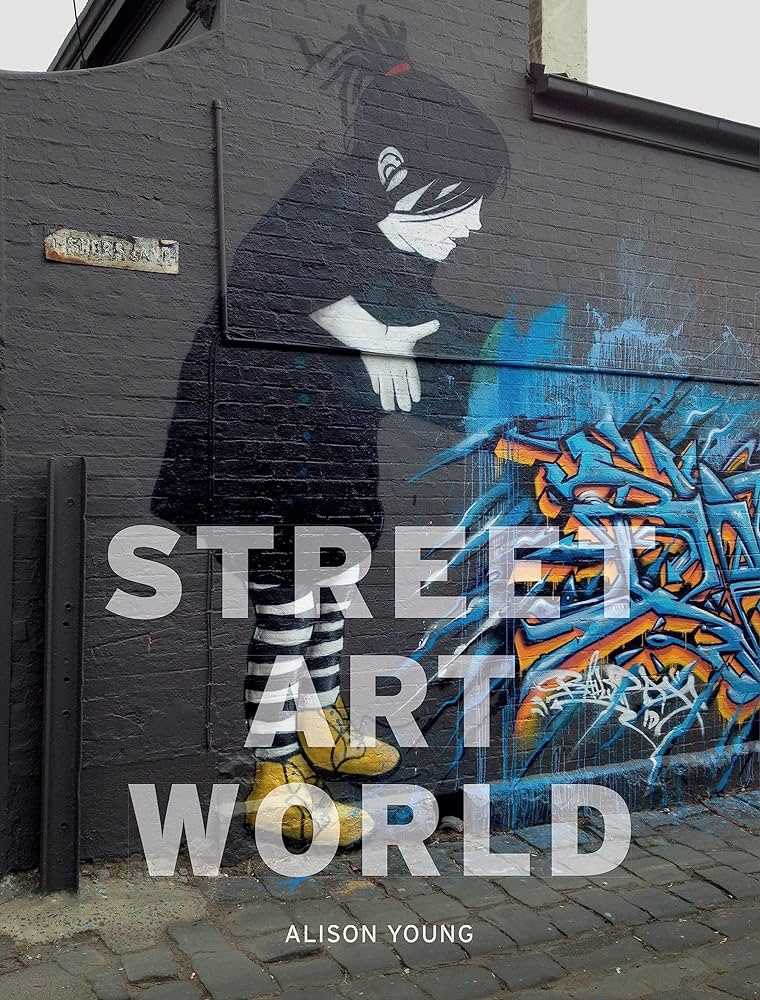
Street art has long served as a powerful form of artistic expression, leaving its mark on the walls and buildings of cities around the globe. With its roots in graffiti and murals, street art has transcended its beginnings to become a recognized art form, blurring the line between art and vandalism.
The Rise of Street Art
Street art can be traced back to the early days of graffiti, when urban youth used spray paint and markers to make their mark on public spaces. Over time, street art has evolved to encompass a wide range of mediums and styles, including stencils, stickers, wheat-pasting, and installations. Artists like Banksy, Shepard Fairey, and JR have become household names, their works appearing in galleries and museums, as well as on the streets.
The Impact of Street Art
Street art has the power to transform a cityscape, breathing new life into neglected areas and sparking conversations about social and political issues. By taking art out of the traditional gallery setting and into the streets, artists are able to connect with a wider audience and engage with the public in unexpected ways. Street art has the ability to challenge the status quo, encourage dialogue, and inspire a sense of community.
While street art has gained recognition in recent years, it still faces challenges and controversy. Many artists continue to work anonymously, facing the risk of arrest and criminal charges. Critics argue that street art is still vandalism and should be eradicated, while others see its value as a form of cultural expression and a reminder of the vibrancy and creativity within a city.
Spray cans and Stencils:
Spray cans and stencils are two essential tools used in street art to create stunning graffiti and murals. These tools allow artists to express their creativity and leave their mark on public spaces around the world.
Spray cans:
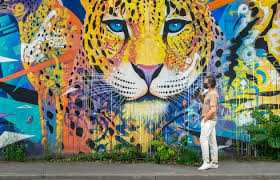
Spray cans are the primary medium for creating graffiti. They contain pressurized paint that can be sprayed onto a surface, allowing artists to cover large areas quickly. Spray cans come in various colors and finishes, including matte, gloss, and metallic. Artists often use multiple spray cans to create intricate designs, blending colors and gradients seamlessly.
Using a spray can requires precision and control. Artists must practice to master their spray technique and achieve the desired effects. They learn how to control the spray pattern, adjust the nozzle for different line thicknesses, and create smooth, even layers of paint. Some artists even modify their spray cans by creating custom caps to achieve unique effects.
Stencils:
Stencils are another popular tool used in street art. Artists create stencils by cutting out designs or images on a thin, flexible material, such as cardboard or acetate sheets. They then place the stencil on a surface and spray paint over it, creating a precise image.
Stencils allow artists to reproduce intricate designs and patterns consistently. They can be reused multiple times, making them an efficient tool for creating graffiti and murals. Artists often combine stencils with freehand spray painting to add depth and dimension to their artwork.
Using stencils requires careful planning and execution. Artists must consider the size and placement of the stencil, as well as the colors and textures they want to incorporate. They need to align the stencil properly to create a clean image, without any smudging or bleeding of the paint.
The Power of Murals:
Murals have long been a powerful form of artistic expression, capable of creating a lasting impact on both individuals and communities. From vibrant street art that brightens up a neighborhood, to politically charged messages that challenge the status quo, murals have the ability to engage, inspire, and provoke thought.
One of the greatest powers of murals lies in their ability to transform bland and ordinary spaces into vibrant and captivating ones. Blank walls and empty buildings are given new life and personality, becoming a canvas for artists to tell stories, express emotions, and showcase their creativity. These murals can turn a walk down the street into a visual journey, providing a unique experience for both locals and tourists.
Murals also have the power to create a sense of belonging and pride within a community. When a mural is created with input and involvement from the local residents, it becomes a symbol of shared values and aspirations. It can represent the history and culture of a neighborhood, reinforcing a sense of identity and unity among its inhabitants. In this way, murals can contribute to the revitalization of a community and help to create a stronger social fabric.
Furthermore, murals can serve as powerful forms of social commentary and activism. Artists can use the medium to bring attention to important issues, challenge social norms, and spur conversations about topics that may be overlooked or ignored. Murals have the ability to communicate messages in a visually striking and accessible way, making them a potent tool for raising awareness and inciting change.
The Culture of Street Art:
Street art is not just about painting on public walls or creating murals; it is a reflection of the culture and identity of a city or community. It goes beyond the traditional boundaries of art galleries and museums, bringing art to the streets and making it accessible to everyone.
Street art is often seen as a form of self-expression and a way for artists to communicate their thoughts, feelings, and opinions. It can be a powerful tool for social and political activism, addressing various issues such as inequality, racism, and environmental sustainability.
One of the prominent features of street art is its ephemeral nature. Unlike traditional art forms that can last for centuries, street art can be temporary and may be removed or painted over by authorities or other artists. This transience adds to the thrill and excitement of encountering street art in its natural environment.
Street art also challenges the notion of who can create and appreciate art. It breaks down barriers and engages with the community, often encouraging dialogue and participation. Street art festivals and events provide opportunities for artists to collaborate and showcase their work, fostering a sense of community and creativity.
Moreover, street art incorporates a range of different techniques and styles, including stencils, graffiti, stickers, wheatpaste, and murals. Artists experiment with various materials and tools, pushing the boundaries of what is possible in public spaces.
Despite its popularity and cultural significance, street art continues to face challenges such as legality and public perception. While some view it as vandalism or a form of anti-establishment rebellion, others recognize its artistic and cultural value.
Breaking Boundaries:
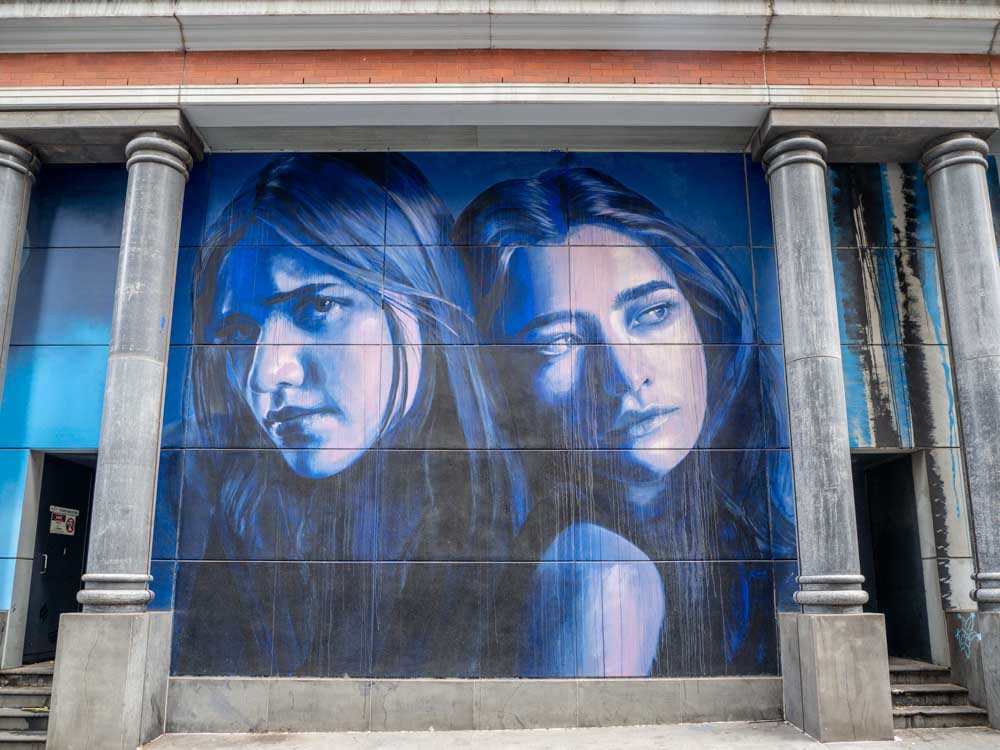
Street art has always been a medium for breaking boundaries and challenging the norm. From its humble beginnings as acts of defiance and rebellion, graffiti and murals have evolved into a respected art form that can be found in cities all over the world.
One of the ways street artists break boundaries is by using public spaces as their canvas. Instead of confining their work to galleries or studios, they take their art to the streets, making it accessible to anyone who happens to pass by. This democratization of art breaks down the barriers between artists and their audience, creating a direct connection and fostering a sense of community.
Another way street art breaks boundaries is by addressing social and political issues. Many artists use their work as a form of activism, shining a light on topics that are often overlooked or ignored. Whether it’s a powerful mural highlighting systemic injustice or a thought-provoking stencil challenging societal norms, street art has the power to spark conversations and bring attention to important issues.
Creating Inclusive Spaces:
Street art also has the ability to transform spaces and make them more inclusive. By adding color and vibrancy to areas that are often neglected or forgotten, artists bring life and energy to urban environments. This can have a profound impact on the people who live and work in these areas, creating a sense of pride and belonging.
Moreover, street art showcases a diverse range of voices and perspectives. Artists from different backgrounds and cultures often collaborate, creating murals that celebrate diversity and promote inclusivity. These collaborations foster a sense of unity and break down barriers between different communities.
Pushing the Boundaries of Creativity:
Street art is not limited to traditional forms like graffiti and murals. Artists are constantly pushing the boundaries of what street art can be, exploring new techniques and mediums. From large-scale installations to interactive sculptures, street art is constantly evolving and challenging the status quo.
Additionally, street artists often work with unconventional materials, repurposing found objects and discarded materials to create their art. This resourcefulness not only adds an element of surprise and innovation to their work, but also highlights the importance of sustainability and environmental consciousness.
- Breaking boundaries is at the core of street art.
- It challenges traditional notions of art and pushes the limits of creativity.
- By utilizing public spaces, addressing social issues, and promoting inclusivity, street art has the power to make a lasting impact.
- Whether it’s through a colorful mural or an interactive installation, street artists continue to break boundaries and inspire a new generation of artists.
The Impact of Street Art:
Street art has become a powerful medium for social and political commentary, as well as a way for artists to reclaim public spaces and engage with the community. Graffiti and murals can have a profound impact on both individuals and society as a whole.
1. Cultural Expression:
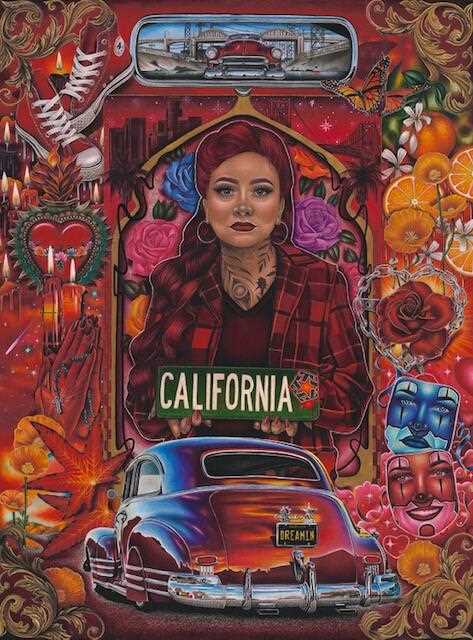
Street art provides artists with a platform to express their thoughts, emotions, and ideas in a public space. It allows for the exploration and celebration of diverse cultures, histories, and identities. Street artists often incorporate elements of their heritage, local traditions, and social issues into their work, creating a visual dialogue with the community.
2. Creating Awareness:
Street art has the power to raise awareness about various social and political issues. Murals and graffiti can serve as visual protests, highlighting injustices, inequality, and other pressing concerns. By occupying public spaces, street art forces people to confront these issues and sparks conversations about them.
3. Transforming Communities:
Street art can transform neighborhoods and communities by revitalizing neglected areas and fostering a sense of pride and ownership. A once dull and uninviting space can be completely transformed by a vibrant mural or a thought-provoking graffiti piece. It can bring people together, stimulate economic growth, and create a sense of identity and belonging.
4. Creative Inspiration:
Street art serves as a source of inspiration for other artists, influencing different art forms such as fashion, design, and photography. It encourages creativity and pushes boundaries, challenging traditional notions of art and encouraging experimentation.
5. Tourism and Urban Development:
Street art has become a tourist attraction in many cities, attracting visitors from around the world. Famous street art locations, such as Berlin’s East Side Gallery or New York City’s Bushwick Collective, contribute to the local economy and the growth of the urban art scene. Cities have also embraced street art as a tool for urban development, commissioning artists to beautify public spaces and create landmarks.
Overall, street art has a powerful impact on both the individual and the society, promoting cultural expression, raising awareness, transforming communities, inspiring creativity, and contributing to tourism and urban development.
A Global Perspective:
Street art and graffiti have become a global phenomenon, showcasing the creativity and drive of artists from all corners of the world. From the sprawling murals of Mexico City to the politically charged stencils in Berlin, street art has transcended cultural and geographical boundaries.
South America boasts a rich tradition of street art, with cities like Buenos Aires and Sao Paulo considered hotspots for graffiti and murals. These vibrant works of art reflect the social and political issues of the region, showcasing the resilience and creativity of its people.
In Europe, cities like London and Barcelona have embraced street art as a form of expression and rejuvenation. Old buildings and forgotten spaces have been transformed into open-air art galleries, showcasing the talent of local and international artists.
The streets of North America are also alive with vibrant street art. From the iconic murals of New York City to the colorful graffiti of Los Angeles, artists are using the urban landscape as their canvas, capturing the spirit and diversity of their communities.
Asia has also witnessed a surge in street art, with cities like Tokyo and Hong Kong embracing this art form. These works are often a fusion of traditional and contemporary styles, creating a unique visual language that reflects the dynamic cultures of these cities.
Africa, too, has its own flourishing street art scene, with cities like Johannesburg and Nairobi becoming hubs for artists. The murals and graffiti found here often address social issues, paying homage to the resilience and spirit of the people.
From giant murals to small stencils, street art has become a global language, connecting people from different cultures and backgrounds. It challenges norms, sparks conversations, and adds beauty to the urban environment. Whether it’s a colorful mural or a thought-provoking stencil, street art continues to leave its mark on cities around the world.
Preserving Street Art:
Street art is a vibrant and dynamic form of artistic expression that often faces challenges in terms of preservation. Unlike traditional art forms that are displayed in galleries or museums, street art exists in public spaces, subject to the elements and the passage of time. Preserving street art poses unique dilemmas for art conservationists and urban planners.
Challenges of Preservation:
One of the main challenges in preserving street art is its ephemeral nature. Most street art is created with temporary materials like spray paint or chalk, making it susceptible to fading, weathering, or vandalism. The transient nature of street art adds to its charm and rebellious spirit, but also means that it can disappear or be defaced within days or even hours of its creation.
Another challenge is the legality of street art. While some cities embrace street art and provide dedicated spaces for artists to create, many still view it as illegal graffiti, leading to its removal or covering up. This creates a dilemma for preserving street art because documenting it may inadvertently incriminate the artist or deface the artwork further.
Preservation Strategies:
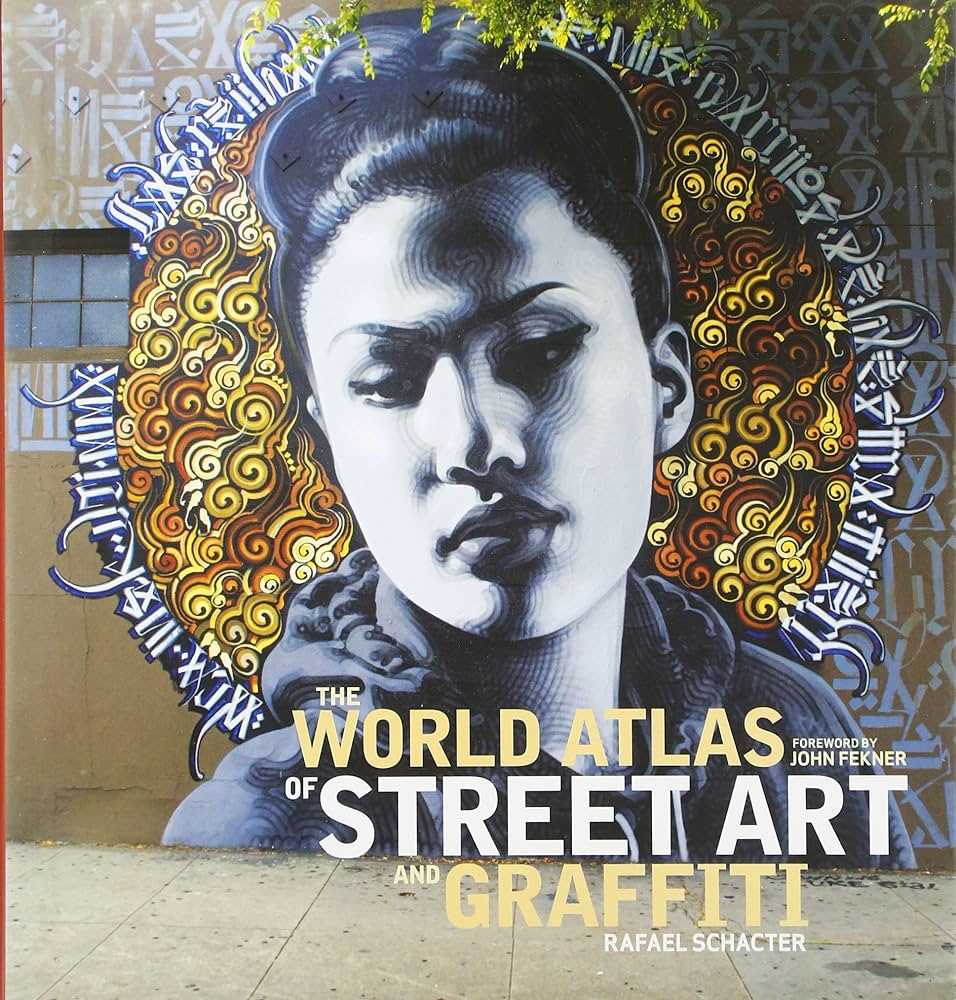
To overcome these challenges, several preservation strategies have emerged. One approach is to document street art through photography or video, capturing its essence before it fades away or gets removed. Online platforms and books dedicated to street art have become invaluable resources for preserving its history and showcasing the diversity of styles and techniques.
Another strategy is to create dedicated street art districts or designated walls where artists can legally paint with the understanding that their work may be temporary. These areas allow street art to thrive while also providing a controlled environment for preservation efforts, such as applying protective coatings or periodic maintenance.
Collaboration between artists, art historians, preservationists, and community organizations is crucial in preserving street art. By involving these stakeholders, discussions on the legal and ethical considerations of preservation can take place, ensuring that the vibrant and rebellious spirit of street art is safeguarded for future generations.
| Benefits of Preservation: | Challenges of Preservation: |
|---|---|
| Preserving street art allows future generations to appreciate and study this unique form of artistic expression. | The ephemerality and transient nature of street art make it difficult to physically preserve. |
| By documenting street art and creating dedicated spaces, its historical and cultural significance can be recognized and celebrated. | The legality of street art and the potential for further defacement complicate preservation efforts. |
| Preservation efforts can contribute to the revitalization of urban areas, attracting tourists and fostering a sense of community pride. | Preservation strategies require collaboration and cooperation between various stakeholders. |

I am a mural enthusiast and a fervent admirer of street art. Rather than creating murals myself, I am passionate about collecting them. My love for street art knows no bounds. I am dedicated to curating and cherishing these artworks that grace the streets. My collection stands as a testament to my profound appreciation for this form of artistic expression.
read about me



